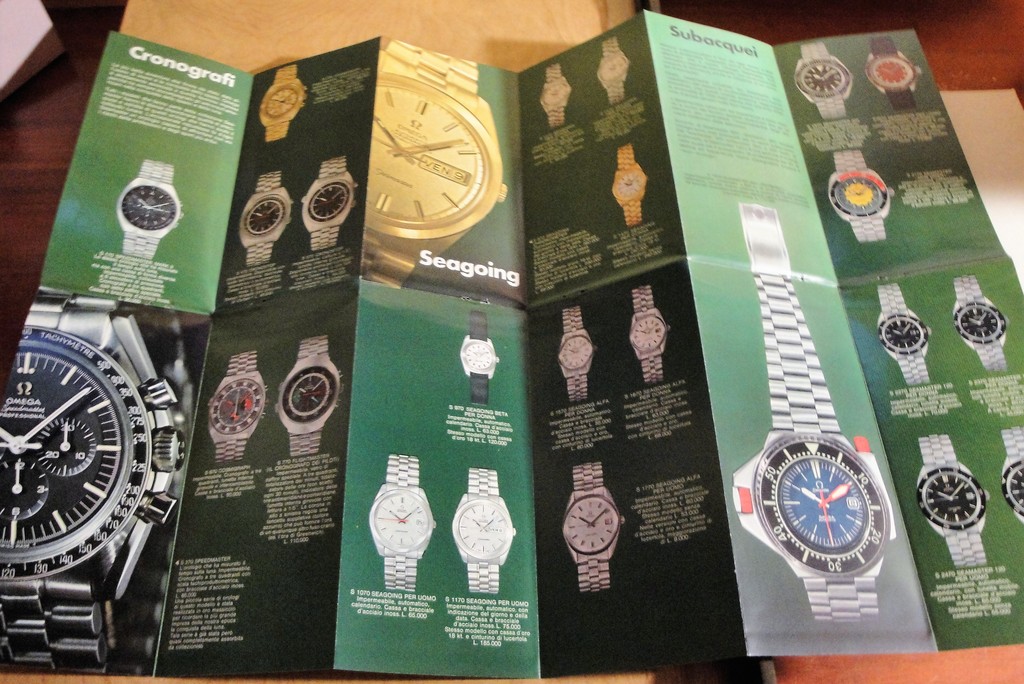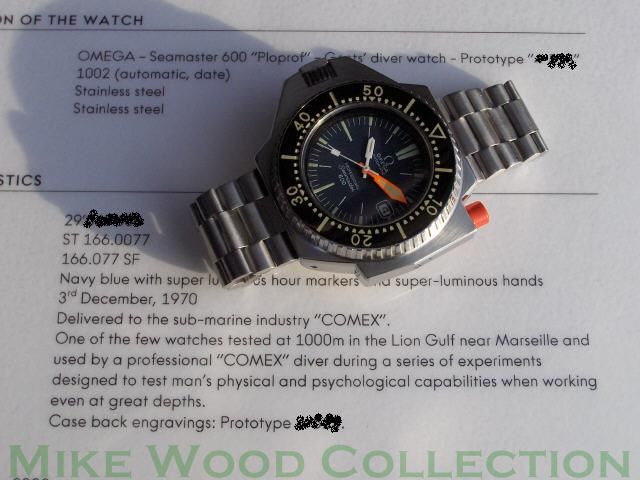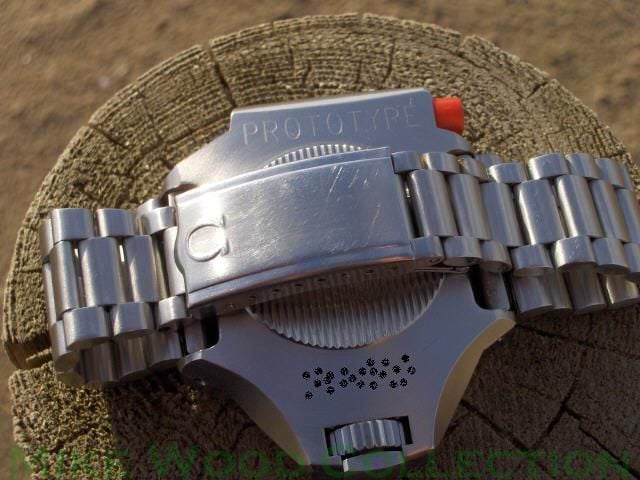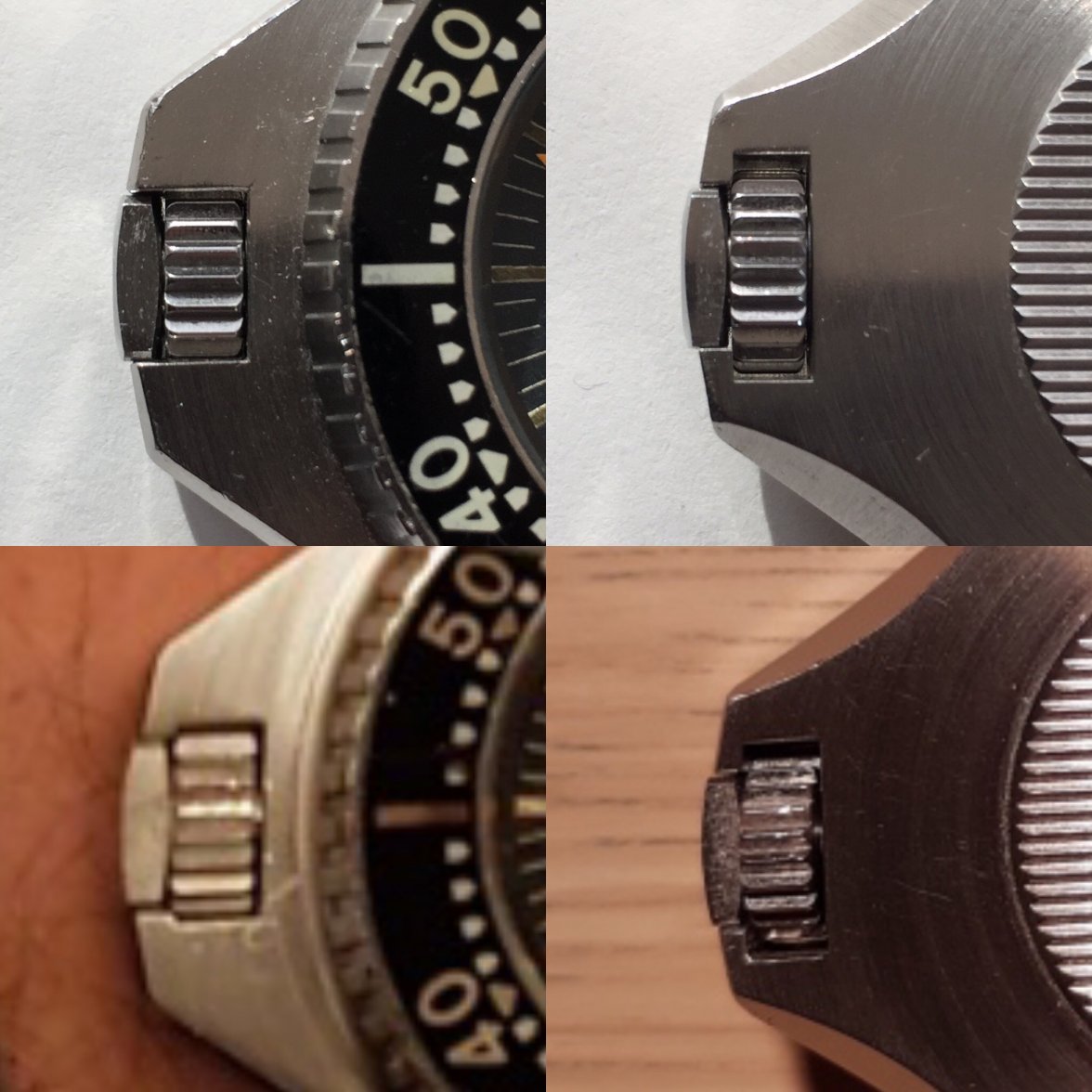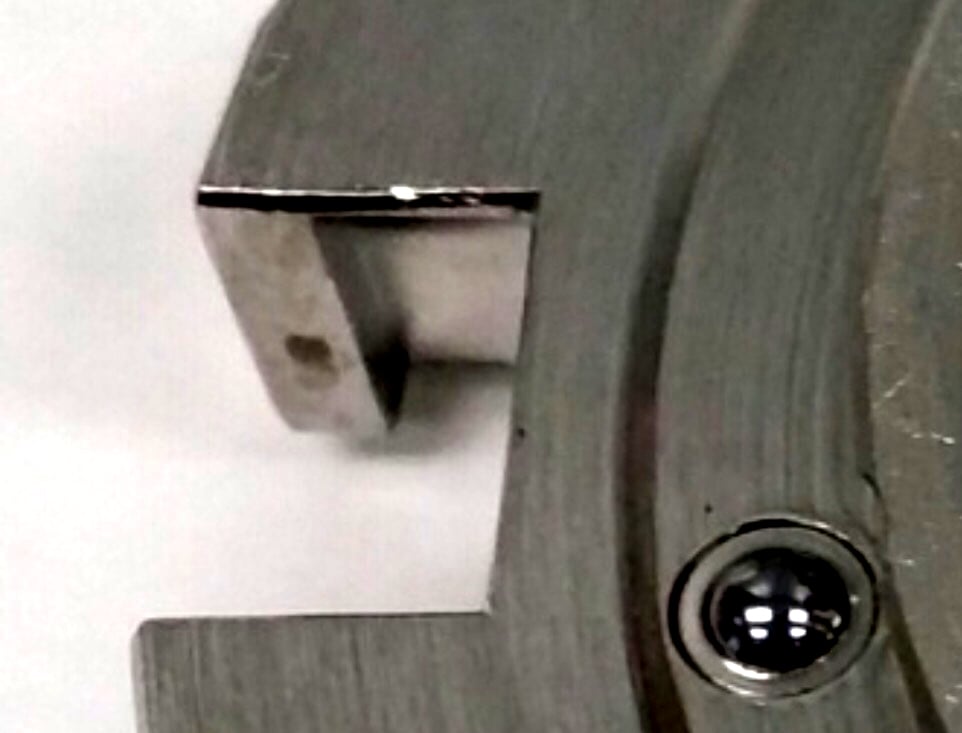Also dial looks like blue color on the brochure...or is it light effect?
All the original PloProf dials were blue, although the various types were different shades. Some of them have discolored to being almost black in appearance...especially the Type 1 dials that, as has been stated before, also tend to bubble. Here's mine. I used favorable lighting, and boosted the saturation a bit to show that it's actually blue.
...but during wearing it looks almost black. Same watch on the wrist under normal (indirect) light:
There were indeed both Cousteau and Comex links:
"Jacques Cousteau’s team had used 300s in 1963 during its Precontinent II dives in the Red Sea, and in 1969 Omega delivered stainless and titanium prototypes of the 300’s successor, the SM600 Plongeur Professionnel (PloProf), to Cousteau for feedback. And although Rolex and the Compagnie Maritime d'Expertises (COMEX) famously began their “preferential relationship” in 1963, Rolex wasn’t the only watchmaker associated with COMEX in the 1960s. According to Omega, the French deep-dive engineering company used Omega’s SM600 ‘extensively on test dives’ during this time, and in 1970 three of its French diving specialists wore 600s during the Janus II dives off the coast of France."
(Source:
http://www.christies.com/features/Omega-Seamaster-300-1966-Deconstructed-5897-1.aspx)
More specifically, during said
"‘operation Janus’ in 1970, 3 Comex divers wore the watch at a depth of 250m for 4 hours a day, for eight days whilst exploring the sea floor in the Gulf of Ajaccio."
(Source:
http://www.ploprof.com)
I doubt that the one in
@Darlinboy's post is one of these, however. A Comex PloProf was sold last year at auction, but the remarks on the abstract were much more specific about the Comex heritage, like this one. It sold for slightly over $93,000 USD (see here:
https://www.phillips.com/detail/OMEGA/CH080116/116)
Just for clarification: the watch pictured above is not necessarily the one sold at the auction (although it may be). AFAIK, it's just one with the same abstract. Of note is the fact that the abstract says that the caseback is engraved with the word PROTOTYPE, which is indeed the case:
So the one in
@Darlinboy's post does not appear to be a Comex, but even though it doesn't have the prototype engraving, I noticed that
the case is in fact different from my regular PloProf case.
When looking at the front of the watch, there are little 'hooks' protruding from the case that appear to hold the ribbed wheel in place, and line up with the crown plate on the extreme left. These 'hooks' are not present on my PloProf when viewed from the front (viewed from the back, both have them). Hopefully it becomes clearer in this picture. The top 2 are my PloProf (front and back) and the bottom to are the one in
@Darlinboy's post (front and back).
They're not actually hooks: it's just that there's a little 'roof' over the crown wheel gap on mine that is absent on the supposed prototype one, which also makes the wheel appear smaller (as there is less of it in sight). See here:
Might just be a different case style, but it's interesting. Not sure if it's $63K interesting, but at least it
seems to jive with the prototype claim on the abstract. I'll have a look around the net to see if this style appears more often. Who knows, it might be one of those given to Cousteau and his buddies. We can dream
😀
Just for clarification:
as far as i know, the red crown material was the same as the red lock button. kind regards. achim
The red ribbed wheel (as with its steel equivalent) is not the actual crown. It's just a tightening screw: the flat square bit on the far left is the actual crown that you rotate to set time and wind.
...I like PloProfs
😀

